Anthurium Fingers lives up to its name, with deeply lobed leaves resembling projections like human fingers. But don’t creep out, as the plant is much easier to take care of and costs you less than a regular manicure.
It’s not hard to care for Anthurium Fingers if you give the plant a proper lookout every now and then. So, let’s get into the care details right away!
Table of Contents Show
Anthurium Fingers: Plant Overview
The main feature of Anthurium Fingers is their lobed leaves that give the impression of a human hand or palm.
Botanically, the leaves are called “pinnatifid” due to the finger-like projections.
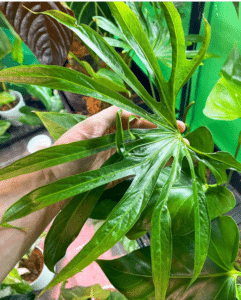
These projections are not prominent in juvenile leaves, but as the plant matures, the leaves get deeper incisions.
However, the plant hides many other features beneath its palm-like leaves. Let’s unfold some of the features of the plant from the table below.
| Features | Descriptions |
|---|---|
| Scientific Name | Anthurium pedatoradiatum |
| Common Name | Anthurium Fingers |
| Family | Araceae |
| Status and Ecology | Life Cycle: Evergreen Perennial Habit: Semi-epiphytic or Totally Epiphytic Shrub Habitat: Tropical Rainforests Native Range: Mexican Gulf, Southeast and Southwest Mexico USDA Zones: 10 to 13 |
| Growth Rate | Slow to Moderate |
| Plant Size (Height and Spread) | 12-39 inches × 39-59 inches |
| Growing Season | Spring and Summer |
| Leaf | Shape: Palmately Lobed or Pinnatifid Size: 12 to 18 inches long Color: Green to Dark-Green Texture: Smooth |
| Flowering Season | Summer (Produces New Flowers Every 6 Months) |
| Flower | Inflorescence: Spathe and Spadix Color: Pale-Green Spathe and Brown to Black Spadix Shape: Leafy Spathe and Cylindrical Spadix |
| Grown for | Elegant Hand-like Leaves |
| Toxicity | Toxic to Pets and Humans |
Ultimate Guide to Caring for Anthurium Fingers
Caring for Anthurium Fingers is similar to caring for other Anthuriums that require tropical care.
So, you must mimic the conditions of a tropical forest to properly care for the plant.
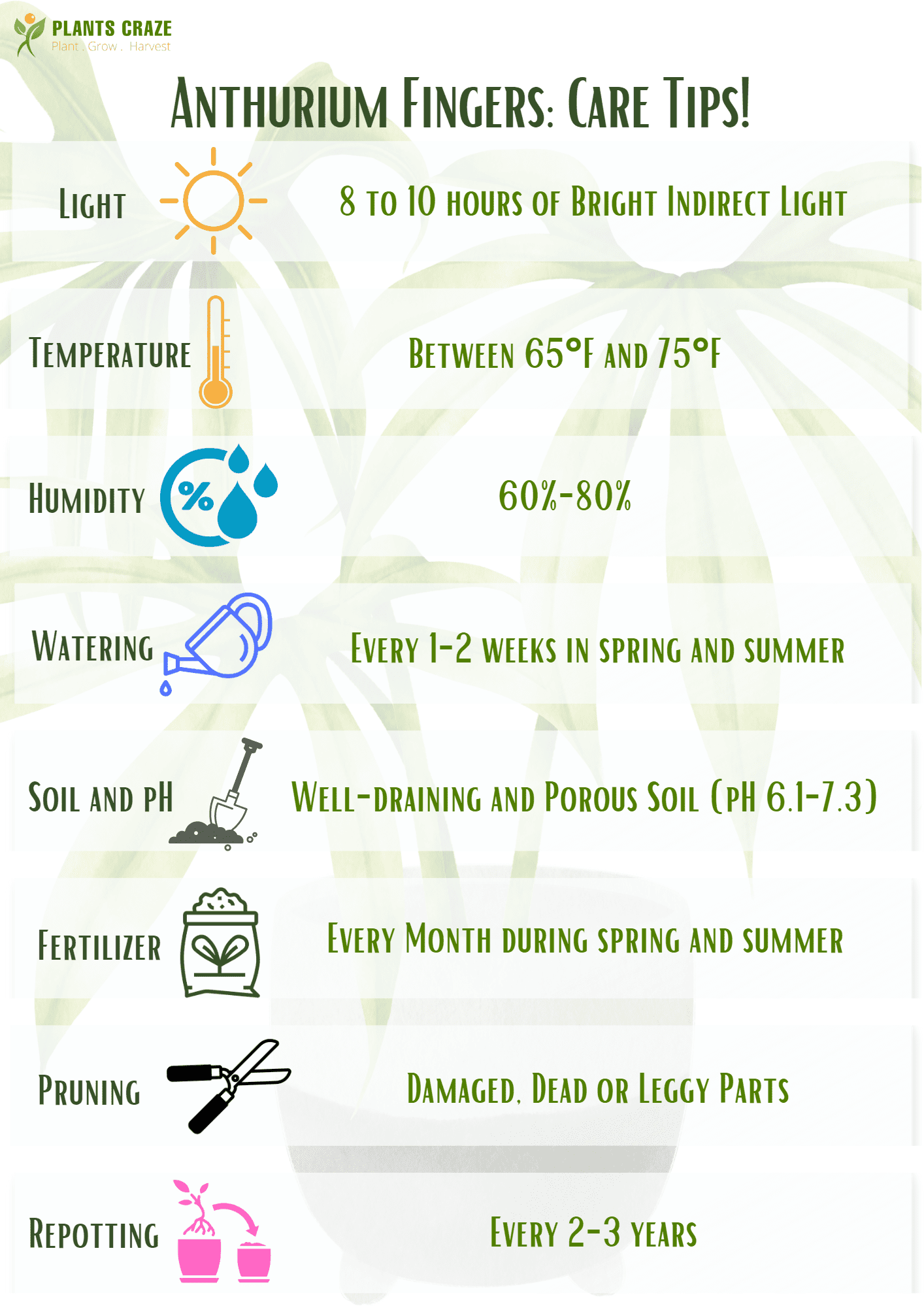
1. Light and Temperature
Tropical rainforests have fitting light and temperature for Anthurium Fingers. So, it’s no surprise to see them grow to full size in their habitat.
In the forest, Anthurium Fingers receives sunshine radiating through the canopy of the tall trees, called dappled or filtered sunshine.
But, Anthuriums are exposed to dappled sunlight only for a few hours and stay in the shade for the rest of the day.
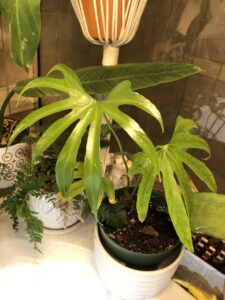
The light intensity also impacts temperature, as intense sunlight surges the surrounding temperature, while low light intensity can subside it.
Without the proper balance of light and temperature, the plant can lose its vigor and succumb without reaching maturity.
Excessive Light and Temperature
- Fading of leaf color from green to yellow.
- Browning or crackling of leaves.
- Curling of leaf tips and margins.
- Dark-brown spots on the leaf surface.
Low Light and Temperature
- Loss of green pigment from the leaves (discoloration).
- Wilting and drooping.
- Leaf fallout and stunted growth.
Tips to Ensure Adequate Lighting
- Keep the plant near an east-facing window in spring and summer.
- Protect the plant from blazing sunshine by placing curtains over windows.
- Locate the plant at least 3-5 feet away from a south-facing window to minimize sunburns.
- Relocate the plant from cold, drafty north-facing windows to a warmer room in winter.
- Use frost blankets to protect the plant from frost injuries.
2. Watering and Humidity
As a plant inhabiting the wet tropical regions, Anthurium Fingers are very picky about watering and humidity needs.
Contrarily, prevent watering in fall and winter to avoid overwatering issues for the plant.
However, a low amount of water can also halt its growth, especially if the surrounding temperatures spike in summer.
Although Anthurium Fingers can thrive in high humidity levels, a sudden backslide of humidity can pose problems for the plant.
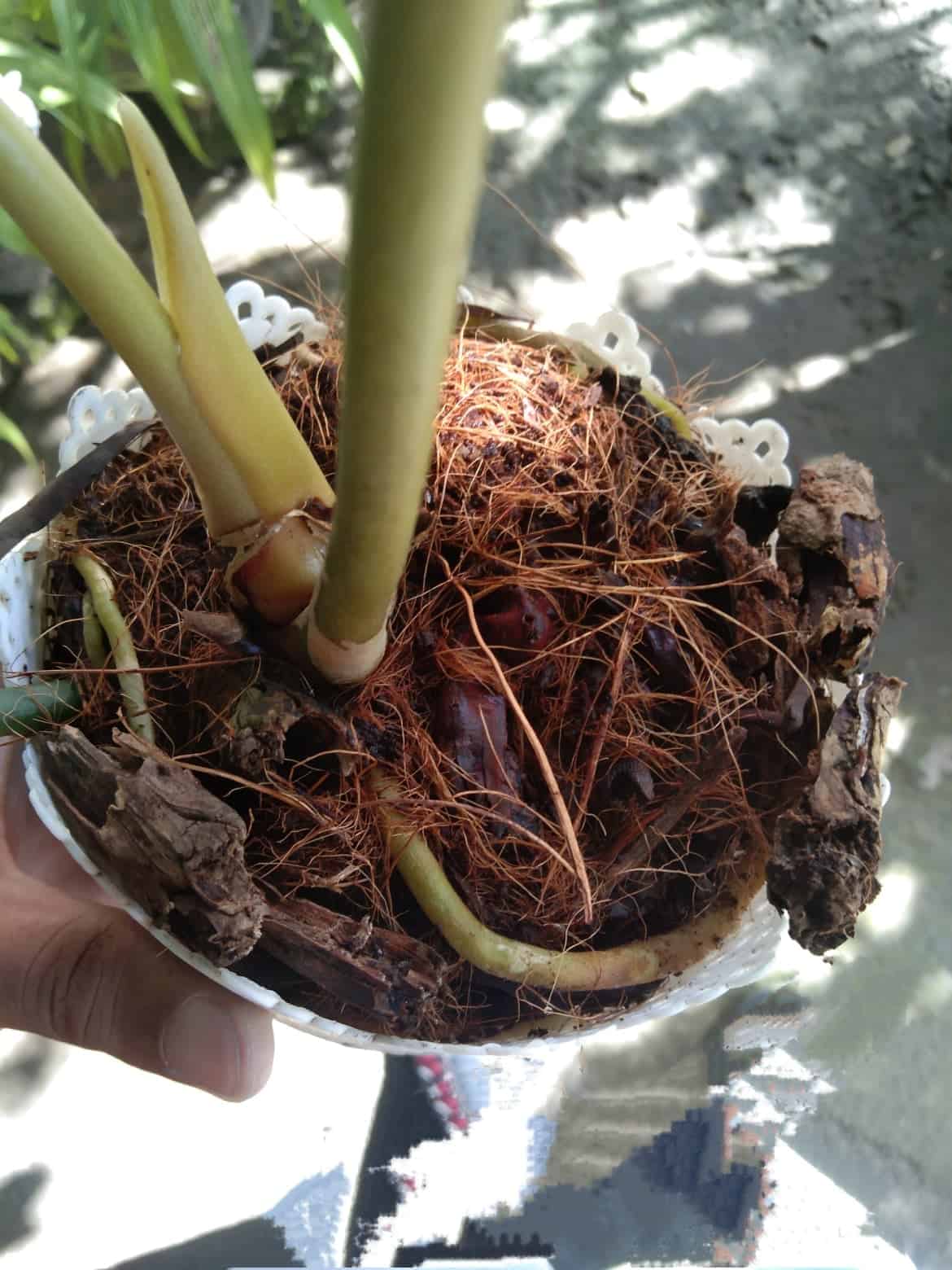
Overwatering Symptoms
- Soggy soil, decaying stem, and root rot.
- Floppy leaves.
- Waning of leaf color from green to yellow.
- Leaves turn brown but attain a mushy texture.
Underwatering Symptoms
- Dry and cracked topsoil.
- Wilting, drooping, and appearance of brown crispy leaves.
- Deteriorating leaf color from green to yellow.
Effect of Low Humidity
- Stunted growth.
- Small-sized leaves.
- Fewer leaves and blooms.
Tips to Optimize the Watering and Humidity
- Keep the soil dry between watering to avoid soggy conditions.
- Consider misting the plant leaves in early summer mornings to compensate for transpirational water loss.
- Assemble the plant with other houseplants, or keep the plant on a pebble tray.
- Try the approach of bottom watering by placing the plant on a water tray for 15-20 minutes until the soil saturates fully.
- Cover the plant with a humidity dome if the ambient humidity levels are low.
3. Soil and Fertilizer
Anthurium Fingers prefer well-draining soil with enough nutrients to sustain their growth throughout the growing season.
A normal potting soil may lose all its nutrients (especially NPK) slowly over the course of watering bouts.
This situation can lead to nutrition deficiencies and slow down general growth.
But mixing the soil with fertilizer can replenish the lost nutriment for the plant.
However, you must cut off fertilizing the plant in fall and winter to prevent the build-up of fertilizer salts in the potting soil.
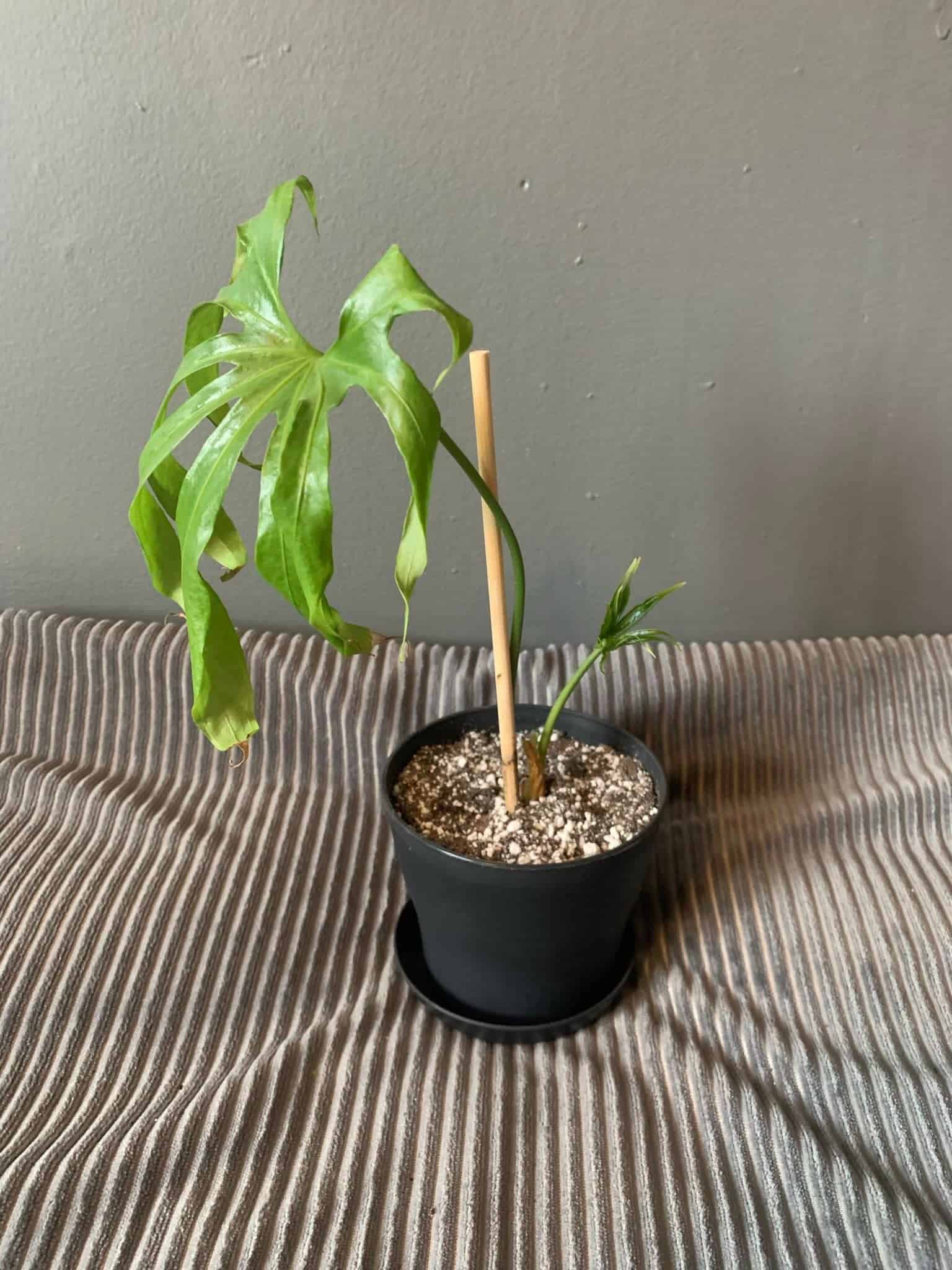
Symptoms of Overfertilization
- Deposition of fertilizer salts on the topsoil.
- Inability to take in nutrients due to root burn.
- The tips and edges of the leaves turn brown and crisp.
Symptoms of Underfertilization
- Change in leaf color due to nutrient deficiencies.
- Droopy leaves, growth halts, and leaf fallouts.
Tips for Using Correct Soil and Fertilizer Application
- Choose the correct fertilizer for the plant and dilute it to one-fourth strength before applying.
- Leach the excess salts from the soil by running the potted plant 4-5 times under distillate water.
- Uproot the plant and check for root damage. Change the potting mix if the symptoms persist.
- Clear out the debris from the drainage holes to ensure good drainage.
- Mix the potting soil with organic perlite or sand if the water stays on the topsoil.
- Remove the water from the pot tray after watering.
4. Sparse Repotting
Anthurium Fingers are slow to moderate growers that rarely become root bound.
Additionally, repotting is stressful for the plant, so bothering the plant often is not a good idea either.
A wider and deeper pot can grant proper legroom for the plant for the next 2-3 years.
It is generally suggested that repotting is only done when the plant shows root-bounding symptoms; otherwise, keeping the plant in the old pot is the best thing to do.
Symptoms of Root Bounding
- Stunted growth and yellow leaves.
- Tightening of potting soil.
- Abrupt drainage of water through the soil without any stagnation.
- Visible cracks or breaks on the pot’s surface.
- Roots poking from the drainage holes.
- Decaying lower stems (moisture-saturated plant).
If the following symptoms are noticeable, repot the plant in a new container.
- Water 1-2 days before repotting to loosen up the soil.
- Take out all the soil, invert the pot, and gently tap at the pot’s base.
- Release the roots from the soil clumps and trim off the leggy roots with sterilized pruners.
- Prepare a new pot and fill it one-third with fresh potting mix.
- Place the plant in the pot’s center, spread its roots, and add more soil from the sides.
- Fill the pot with soil up to an inch below the rim, water lightly, and place it in bright indirect sunlight.
- Give the plant a few weeks to recover.
5. Occasional Pruning
Pruning is crucial for removing dead, decaying, and infested parts in all the Anthuriums.
This releases stress from the plant and helps to preserve the energy for new growth in the following season.
While pruning, check for pests (aphids, mites, thrips, mealybugs, or scales) and signs of diseases (blights, spots, and root rot).
If the plant shows heavy infestation, follow these tips while giving it a proper trim.
- Isolate the plant to prevent the possible spread of infection.
- Pick the pests manually or use q-tips dipped in isopropyl alcohol to dab them.
- Rub the leaves, stems, and petioles with neem oil once a week during the infestation.
- Trim the parts and burn them for safe disposal.
- Keep an eye on the potting soil for fungal growth, and change the potting mix if it gives off a fishy smell.
Anthurium Fingers: All About the Growth Habit
Anthurium Fingers is a slow grower but will generously rise and reward you with healthy foliage year-round with correct care.
But, the leaves of the young Anthurium plant may not have it, and this trait comes very late in life.
However, the plant can grow 12-39 inches tall and spread 39-59 inches at homecare. This is the mature size of the plant, and around this time you can expect their leaves.
Moreover, as the plant grows, the leaves become even more pinnatifid and gain additional leafy appendages. Anthurium Fingers can have up to 13 appendages on their leaves in some cases!
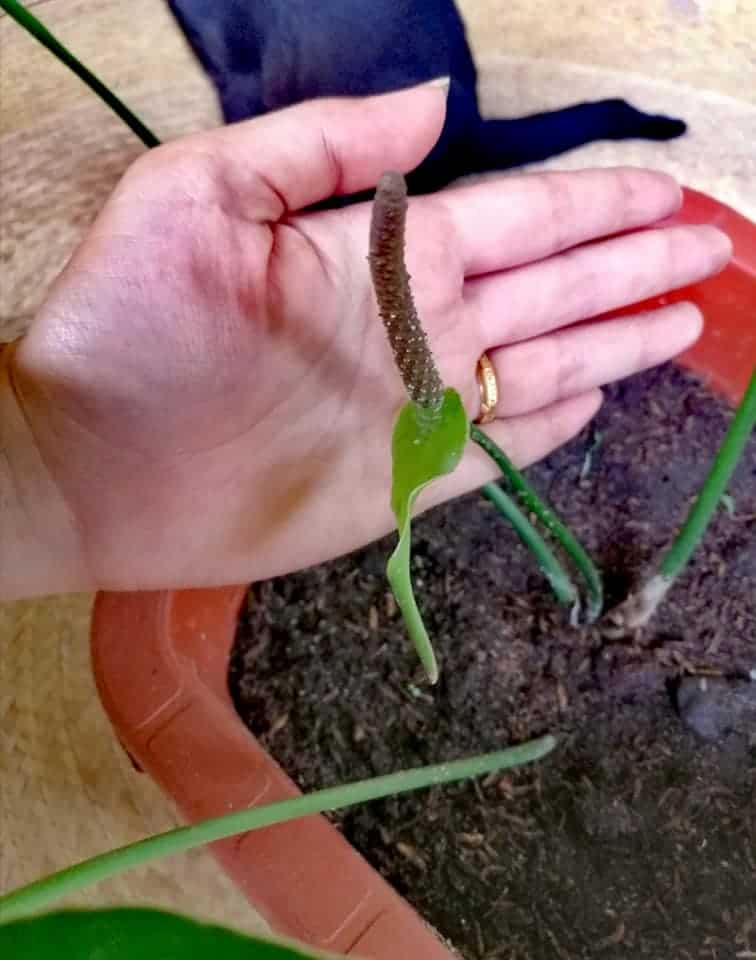
The growing phase of the plant starts in spring and ends in late summer but becomes dormant in fall and winter.
But, before going dormant, the plant enters the flowering phase and begets unusual inflorescence in its flowering stalk, called spathe and spadix, a trademark of Anthuriums.
The spathe is leafy and pale green that veils over the brown to black spadix.
The function of the spathe is to lure pollinators whereas the spadix contains many flowers with male and female parts.
Following pollination, the plant enters the fruiting phase resulting in the formation of fruits.
Anthurium Fingers have almost similar leaves to Anthurium Pedatum, but their care requirements vary. Know the difference by checking their care routine!
Toxicity of Anthurium Fingers
Like all the Anthurium species, Anthurium Fingers is a toxic plant containing calcium oxalate crystals in all its parts.
ASPCA mentions that the Anthurium species is toxic to both pets and humans.
Moreover, according to the University of California, the Anthurium plant is listed as a toxic houseplant.
Upon contact with the plant’s sap or ingestion of plant parts, symptoms like oral, buccal, and ocular irritation are very common in pets and humans.
However, you can regress the irritation by washing the mouth, eyes, nose, and skin with milk.
But this is an immediate safety aid you can provide to yourself and your pets.
In serious cases, you must immediately seek some medical attention. To do this, you can call any of the following helpline numbers.
- American Association of Poison Control Center (AAPCC): (800) 222-1222
- Animal Poison Control Center (APCC): (888) 426-4435
Propagating Anthurium Fingers
The efficient way to propagate Anthurium Fingers is to use stem cuttings with at least a node and 1-2 leaves.
However, you must take the cuttings in early spring when the plant is actively growing.
You can also save some cuttings in late winter, but be careful not to damage the node.
- First, uproot the mother plant and expose the root bulb by shaking excess soil. Before uprooting, water the plant 1-2 days before the process for easy unpotting.
- Take a sterilized knife, and make a diagonal cut (at 45°) right 0.5 inches above the leaf node (point from where the leaf arises).
- Prepare a deep and wide planter with drainage holes and fill it one-third with new potting mix.
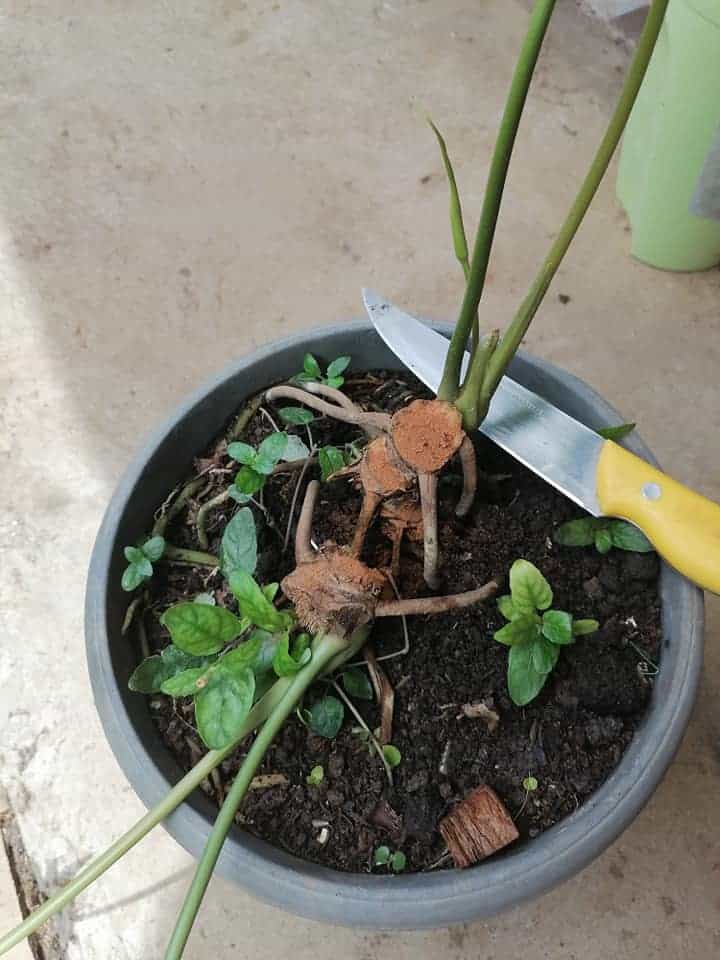
- Place the cuttings at the center of the pot and fill the soil from the sides up to an inch below the pot’s brim.
- Moisten the soil lightly, and place the cuttings in bright indirect light for 8-10 hours daily.
- You can also cover the cuttings with a long zip-lock bag to secure humidity and warmth.
- The cuttings will sprout new growth within 4-6 weeks.
If you want to get into details and a step-by-step propagation guide, follow the video.
Anthurium Fingers for Sale
This exotic plant is available in many online stores. Check the following recommendations below.
| Sites | Expected Delivery Date |
|---|---|
| Etsy | Within 5-7 days after placing an order |
| Gabriella Plants | Within 7 days after placing an order |
| Wells Spring Gardens | Within 7-10 days after placing an order |
| Canopy Plant Co. | Within 5 days after placing an order |
FAQ About Anthurium Fingers
Does Using Coffee Ground Benefit Anthurium Fingers?
Although it may work for most plants, Anthurium does not get an additional benefit from using coffee grounds.
In fact, it is more detrimental and encourages the growth of molds, changes soil pH, and poses nutrient deficiencies.
How Long do Anthurium Fingers Survive?
Anthurium Fingers will survive indoors for 3-5 years with proper care.
But you can extend its life by propagating and growing new plants from a healthy mother plant.
Do Anthurium Fingers Flower?
Anthurium Fingers produce flowers during their growing season (especially in summer). But the plant grows dormant for 6 months in fall and winter.
However, you can expect new flowers to emerge from the plant as soon as spring is on the prowl.
From Editorial Team
Prune to Encourage New Leaves!
The palm-like leaves are the hallmark of Anthurium Fingers. To encourage more leaves, you must remove the old leaves time-to-time to have healthy growth. By doing so, you may even incite the plant to produce flowers!
